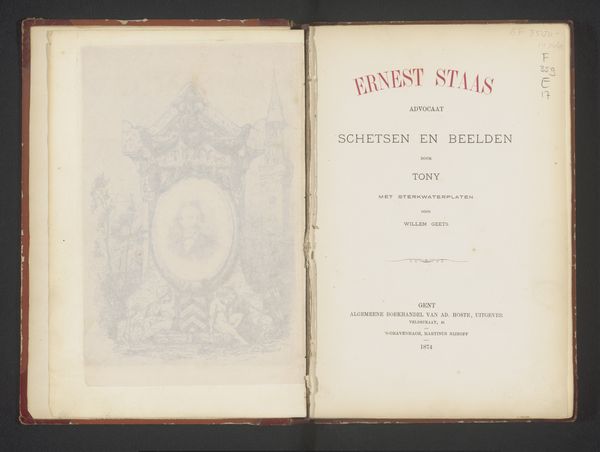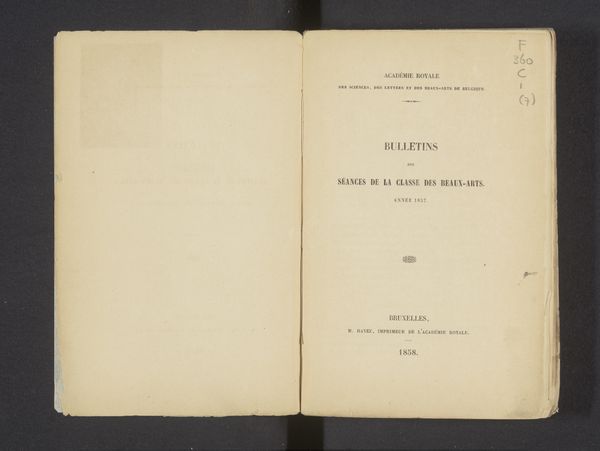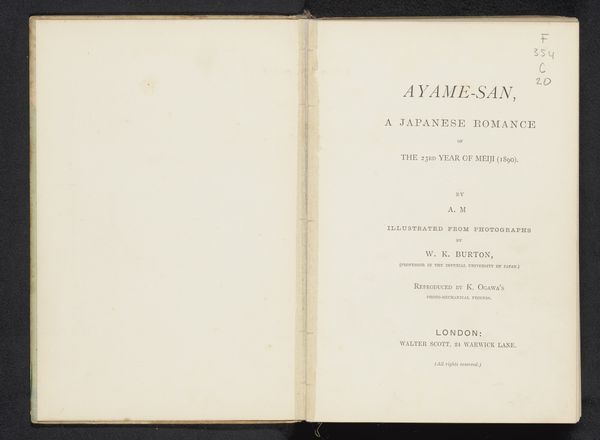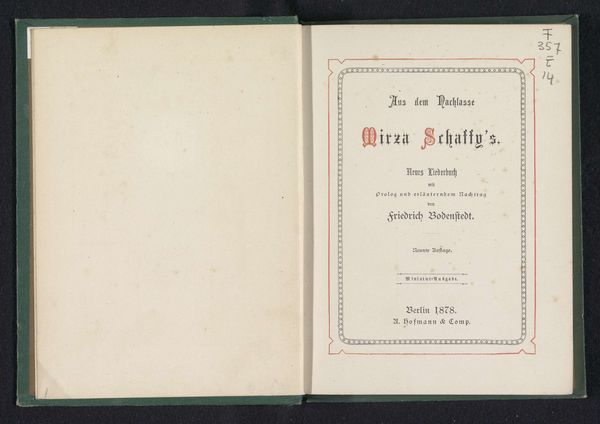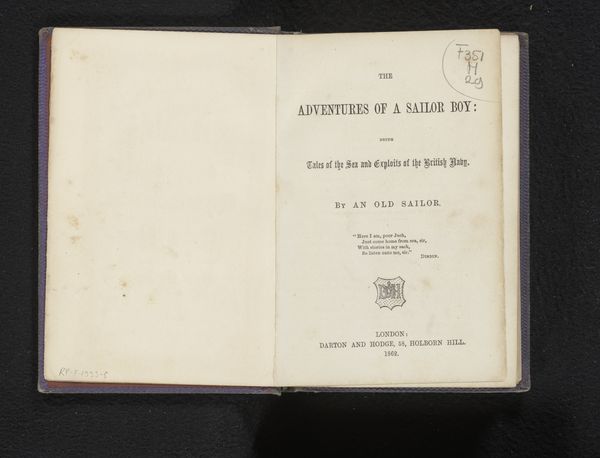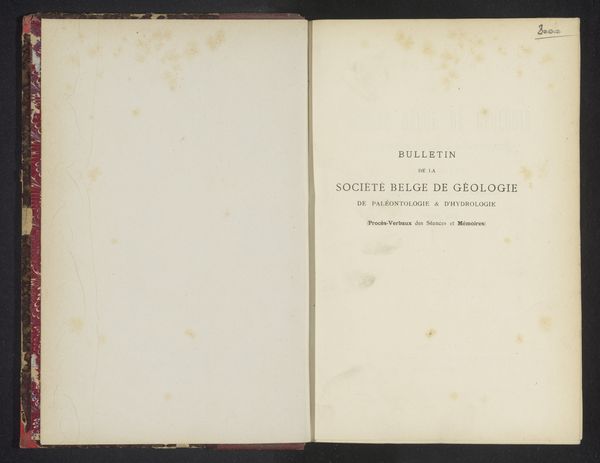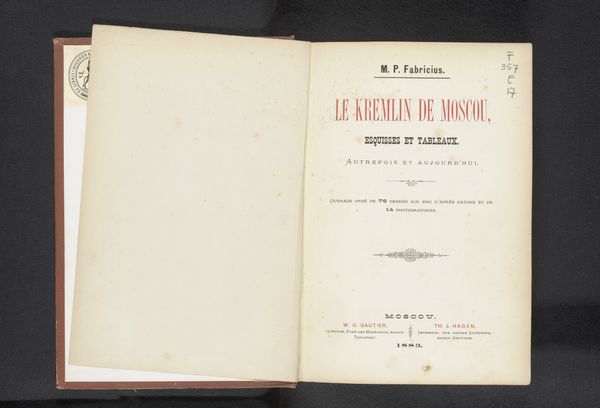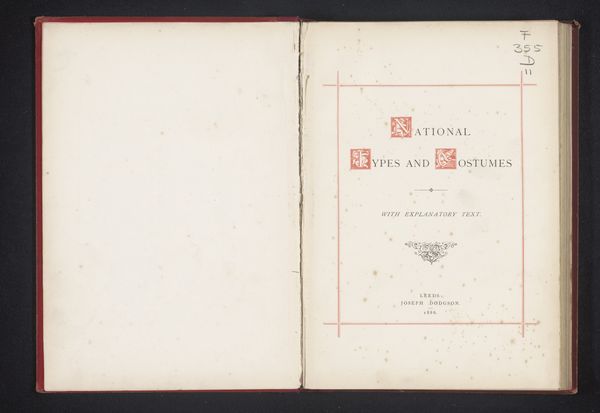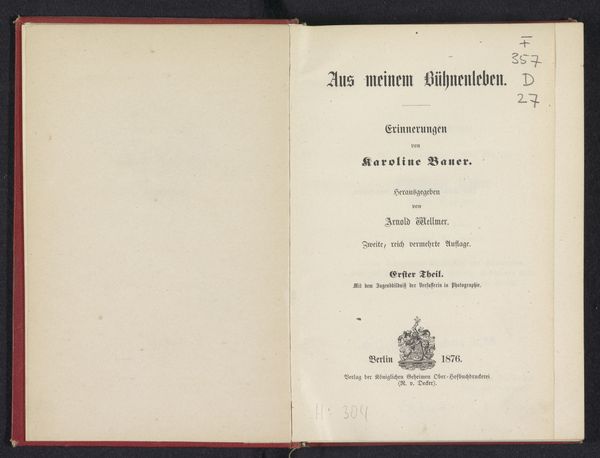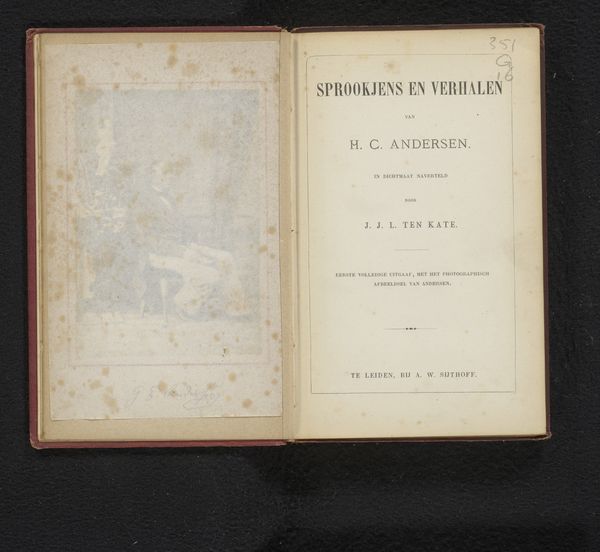
portrait
aged paper
toned paper
homemade paper
paper non-digital material
paperlike
paper texture
personal sketchbook
fading type
genre-painting
watercolor
historical font
Dimensions: height 270 mm, width 186 mm, thickness 23 mm
Copyright: Rijks Museum: Open Domain
Curator: Today, we're looking at the opening pages of "Ernest Staas, advocaat: schetsen en beelden," a print from 1875. Editor: The piece, even in its book form, immediately evokes a sense of fragile intimacy. It’s all delicate lines and faded paper, creating a muted, almost dreamlike quality. Curator: Absolutely. This print, which translates to "Ernest Staas, lawyer: sketches and images," by Anton Bergmann presents a glimpse into the professional and cultural milieu of the time. Staas himself seems to have been a man of considerable standing in Ghent, Belgium. The second page of the work contains the title. Editor: The cover, though somewhat faded, hints at a fascinating tension between the serious profession – law – and the implied artistic contents of sketches and images. And the red historical font lends it a distinctly old-world aura. Does the image in the oval of the opposite page depict Mr. Staas? Curator: It is, presumably. Considering that the printing was done nearly 150 years ago, this piece can really reveal to us concepts of gender, identity and even class status in Belgium. Editor: Indeed. The figure is obscured somewhat and that evokes the passage of time and shifting cultural relevance. I wonder, how was Mr. Staas viewed by the artists themselves? And did his depiction embody specific values or attributes associated with his profession? Curator: Exactly, it’s also interesting to consider what the intended audience might have thought and felt looking at a printed material. It almost romanticizes a part of their daily lives back then. The artist made this piece a ‘genre painting’ rather than just some title design or portrait. Editor: Thinking about the symbols and historical context gives us a richer understanding of the image and its world. Thank you for that illuminating viewpoint, shifting my perception of just a simple printed title into a layered, very telling glimpse into the late nineteenth century. Curator: Thank you as well, it's been really thought provoking to consider not just the historical moment, but also the long trajectory of meaning and relevance these images continue to have today.
Comments
No comments
Be the first to comment and join the conversation on the ultimate creative platform.
